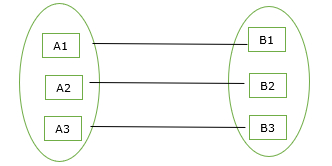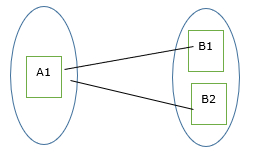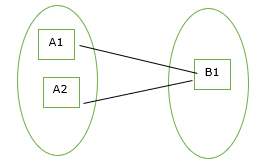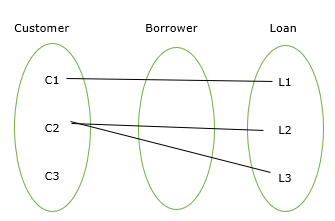
 Data Structure
Data Structure Networking
Networking RDBMS
RDBMS Operating System
Operating System Java
Java MS Excel
MS Excel iOS
iOS HTML
HTML CSS
CSS Android
Android Python
Python C Programming
C Programming C++
C++ C#
C# MongoDB
MongoDB MySQL
MySQL Javascript
Javascript PHP
PHP
- Selected Reading
- UPSC IAS Exams Notes
- Developer's Best Practices
- Questions and Answers
- Effective Resume Writing
- HR Interview Questions
- Computer Glossary
- Who is Who
What are constraints on ER model in DBMS?
Constraints are used for modeling limitations on the relations between entities.
There are two types of constraints on the Entity Relationship (ER) model −
Mapping cardinality or cardinality ratio.
Participation constraints.
Mapping Cardinality
It is expressed as the number of entities to which another entity can be associated via a relationship set.
For the binary relationship set there are entity set A and B then the mapping cardinality can be one of the following −
One-to-one
One-to-many
Many-to-one
Many-to-many
One-to-one relationship
An entity set A is associated with at most one entity in B and an entity in B is associated with at most one entity in A.

One-to-many relationship
An entity set A is associated with any number of entities in B with a possibility of zero and an entity in B is associated with at most one entity in A.

Many-to-one relationship
An entity set A is associated with at most one entity in B and an entity set in B can be associated with any number of entities in A with a possibility of zero.

Many-to-many relationship
An entity set A is associated with any number of entities in B with a possibility of zero and an entity in B is associated with any number of entities in A with a possibility of zero.

Participation Constraints
Participate constraints are two types as mentioned below −
Total participation
Partial Participation
The participation constraints are explained in the diagram below −

Here, the customer to Loan is partial participation and the loan to the customer is total participation.
Total participation
The participation of an entity set E in a relationship set R is said to be total if every entity in E Participates in at least one relationship in R.
For Example − Participation of loan in the relationship borrower is total participation.
Partial Participation
If only some of the entities in E participate in relationship R, then the participation of E in R is said to be partial participation.
For example − Participation of customers in the relationship borrower is partial participation.

